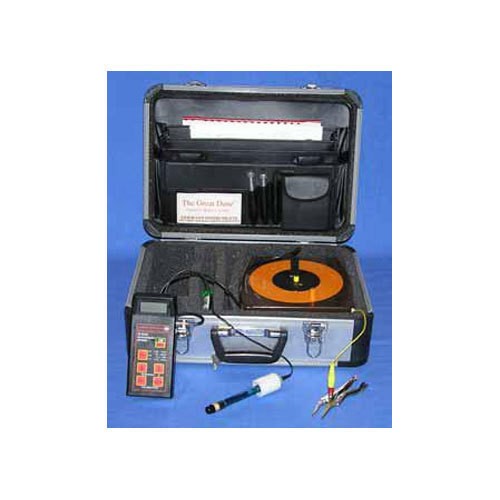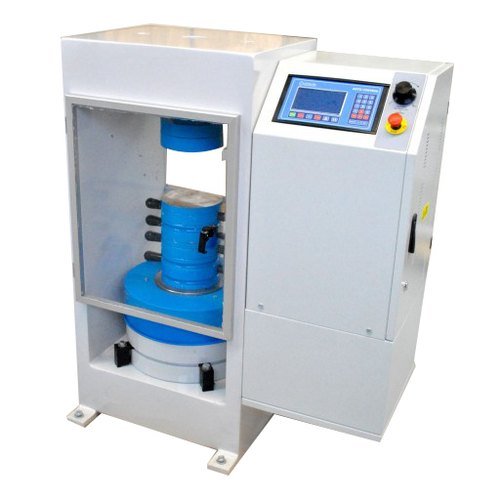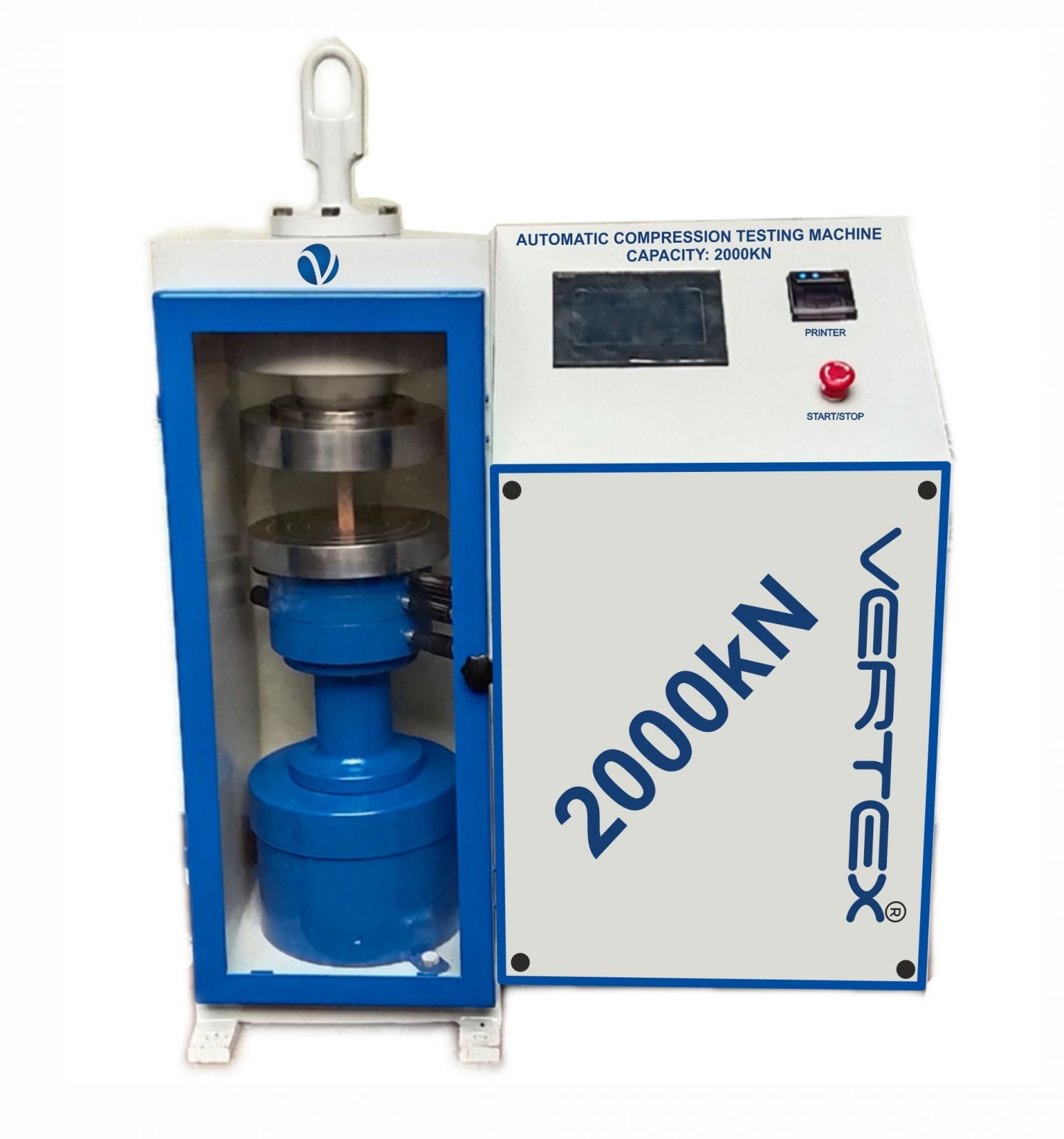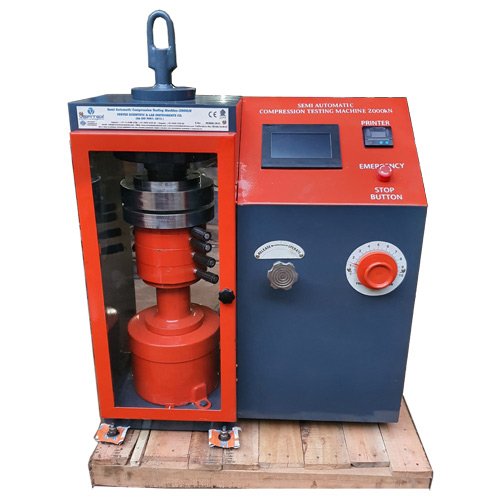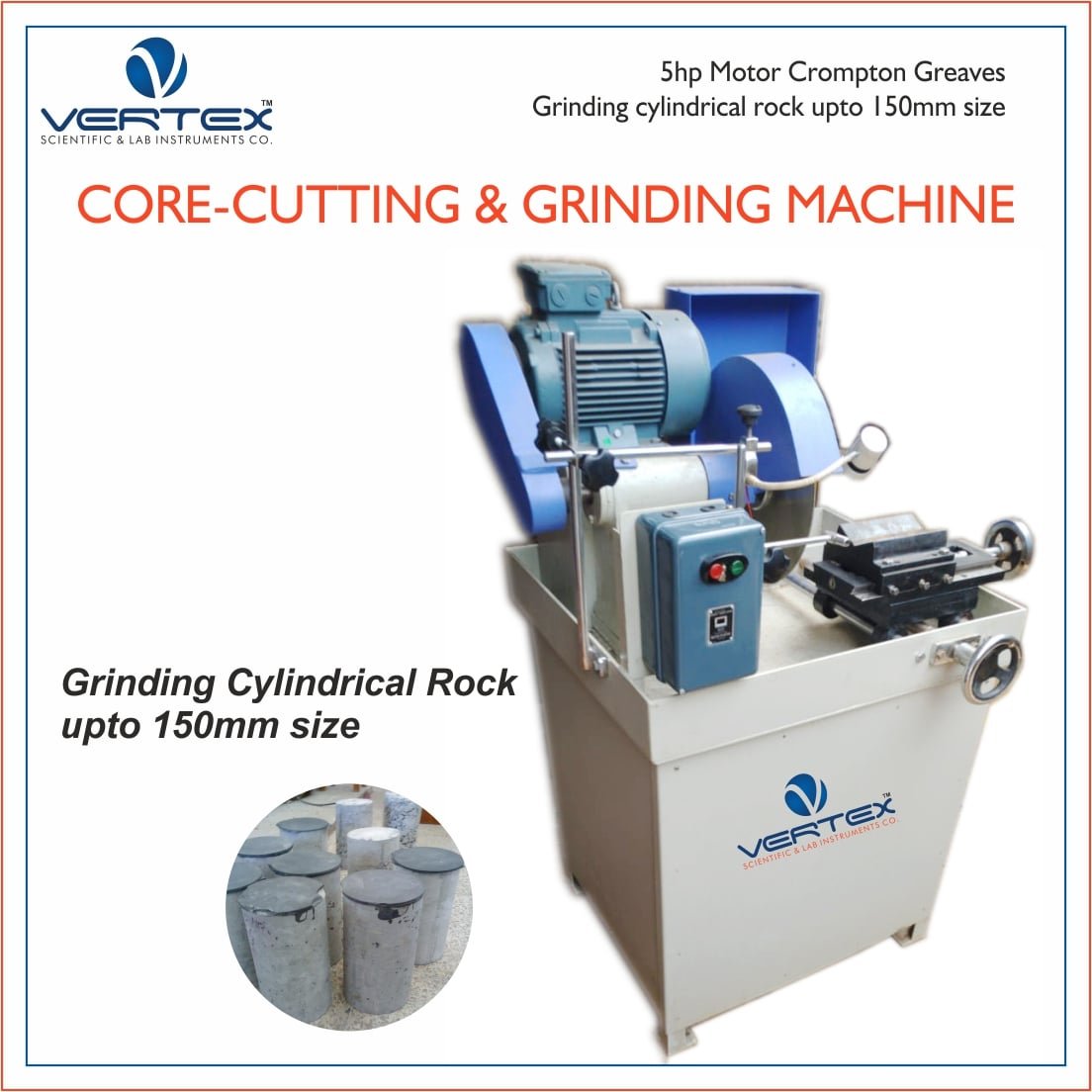Principle & Procedure :
The instrument measures the potential and the electrical resistance between the reinforcement and the surface to evaluate the corrosion activity as well as the actual condition of the cover layer during testing. The electrical activity of the steel reinforcement and the concrete leads them to be considered as one half of weak battery cell with the steel acting as one electrode and the concrete as the electrolyte. The name half-cell surveying derives from the fact that the one half of the battery cell is considered to be the steel reinforcing bar and the surrounding concrete. The electrical potential of a point on the surface of steel reinforcing bar can be measured comparing its potential with that of copper – copper sulphate reference electrode on the surface. Practically this achieved by connecting a wire from one terminal of a voltmeter to the reinforcement and another wire to the copper sulphate reference electrode. Then generally readings taken are at grid of 1 x 1 m for slabs, walls and at 0.5 m c/c for Column, beams.
| The risk of corrosion is evaluated by means of the potential gradient obtained, the higher the gradient , the higher risk of corrosion. The test results can be interpreted based on the following table |
|
|
Half – cell potential ( mv) relative to
Cu-Cu sulphate Ref. electrode |
% chance of corrosion activity |
| Less than – 200 |
10% |
| Between – 200 to – 350 |
50% (uncertain) |
| Above – 350 |
90% |
| Significance and use : |
This method may by used to indicate the corrosion activity associated with steel embeded in concrete.
This method can be applied to members regardless of their size or the depth of concrete cover.
This method can be used at the any time during the life of concrete member. |
|
| Reliability & Limitations : |
| The test does not actual corrosion rate or whether corrosion activity has already started, but it indicates the probability of the corrosion activity depending upon the actual surrounding conditions. If this method used in combination with resistivity measurement , the accuracy is higher. |
| If the concrete surface has dried to the extent that it is dielectric , then pre wetting of concrete is essential especially for Cement Silos, Exposed roof slab. The Quality of the cover concrete, particularly its moisture condition and Contamination by carbonation and / or chlorides may affect the results. |

